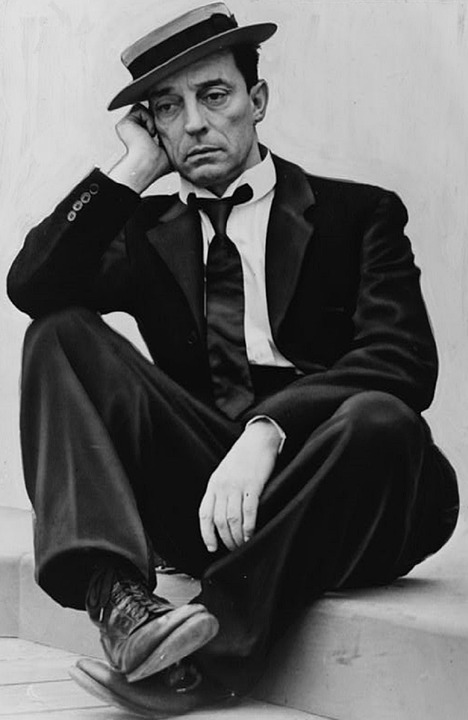You might be able to tell from my gravatar that my hair was worn in a very short pixie crop. I decided to grow it into a bob, and it’s taking approximately eleventy billion years to get there. The result of this is that despite my love of all things art deco, and indiscriminate detective show watching, I cannot watch Miss Fisher’s Murder Mysteries due to serious hair envy.

Image from here
Thank goodness Poirot is bald. And I don’t mind the fact that his moustache is (marginally) better than mine. So for now my experience of a fictionalised 1920s needs to be limited to novels where I can pretend that all the women have crew cuts.
Firstly, The Paying Guests by Sarah Waters. I don’t read many thriller-type novels, and Waters wouldn’t wholly fall into this category, but she can certainly write a page-turner and I find myself reading compulsively to reach the end as soon as possible. Set in 1922, The Paying Guests is set amongst the hardships and fallout of World War I. Frances Wray and her mother live in the mildly oppressive south London suburbs, grieving the loss of Frances’ brother in the trenches and the subsequent death of her father, which has resulted in the need for them to take in paying guests (Mrs Wray’s suburban sensibilities baulk at the term ‘lodgers’). Frances had been a suffragette and in a loving relationship with another woman before the war, but had given up both to support her mother, and live a kind of half-life:
“She was young, fit, healthy. She had – what did she have? Little pleasures like this. Little successes in the kitchen. The cigarette at the end of the day. Cinema with her mother on a Wednesday. Regular trips into Town. There were spells of restlessness now and again; but any life had those. There were longings, there were desires…”
The paying guests arrive in the form of Mr and Mrs Barber, and Frances is drawn towards the colourful and artistic Lilian:
“And that was all it took. They smiled at each other across the table, and some sort of shift occurred between them. There was a quickening, a livening – Frances could think of nothing to compare it with save some culinary process. It was like the white of an egg growing pearly in hot water, a milk sauce thickening in the pan. It was as subtle yet as tangible as that.”
Frances and Lilian begin an affair, and the brilliance of Waters’ writing means this is set within meticulous – but never overwhelming – period detail, and is simultaneously erotic and yet with a sense of foreboding that draws you onwards:
“Only when Frances’s lips began to travel to her knuckles did she draw one of her hands free – the left hand, the one with the rings on it. She set it down to steady herself against Frances’s embrace and there was the muted tap of her wedding band, a small, chill sound in the darkness.”
I won’t say much more for fear of spoilers, except that The Paying Guests is Waters at the height of her powers, achieving a compulsive plot-driven story that is also humane and moving:
“Making her way back to the yard, looking again at the rosily lighted windows of her own and her neighbours’ houses, she had the stifling sensation that she was putting herself beyond the reach of those warm, ordinary rooms, cutting herself off forever from all that was decent and calm.”

One of my favourite things from the 1920s
Secondly, Carter Beats the Devil by Glen David Gold. A fictional biography of Charles Carter, golden-age stage magician, Gold’s first novel follows Carter from his childhood discovery of his vocation, through his apprenticeship in seedy sideshows, to his zenith performing the titular spectacle.
“The rarest need in life is the one met suddenly and completely. This is how it was with Charles Carter and the art of magic.”
For much of the novel, Carter is in existential crisis (not as tedious at it sounds) having lost the love of his life. There’s also the small matter of being pursued by the Secret Service who suspect him of having killed President Harding and having an arch nemesis lurking in the background, waiting to strike. The 1920s setting is perfect, perched as it is on the cusp of a new world – technology is growing apace and the old theatre traditions are dying out, while the aftermath of the war adds an extra dimension to the audiences’ need for magic:
“Six nights a week, sometimes twice a night, Carter gave the illusion of cheating death. The great irony, in his eyes, was that he did not wish to cheat it. He spent the occasional hour imagining himself facedown in eternity. Since the war, he had learned how to recognise a whole class of comrades, men who had seen too much: even at parties, they had a certain hollowing around the eyes, as if a glance in the mirror would show them only a fool having a good time. The most telling trait was the attempted smile, a smile aware of being borrowed.”
As with magicians, Gold’s art is visual, he creates such vivid scenes that this was one of those novels that I could clearly see being filmed. Although a chunky novel, it doesn’t flag and, like Carter’s show, builds to a satisfying denouement.
Carter Beats the Devil is about the illusions we accept, those we refute, the role of marvel in our lives, and when to take the leap and abandon the need to know how it all works.
“Faith was a choice. So, it followed was wonder.”
To end, the most tickety-boo, spiffingest flapper of them all, the divine Josephine Baker, who truly is the cat’s meow:
I can totally commiserate on the trials of bob-growing. I, too, had dreams of a glossy chin-hugging Phryne Fisher cut, but I ended up looking like the secret love child of Victoria Wood and Velma from Scooby Doo! I really must get round to reading ‘The Paying Guests’. I love Sarah Waters for all the reasons you’ve said, but have resisted reading her last few novels. It’s a funny thing, as I know I’ll love them, but it’s also nice knowing that if all else fails, I have some treats in store, like an emergency reading kit.
LikeLiked by 2 people
Haha! I definitely won’t achieve Phryne levels of perfection, but Velma was always my favourite so I’m fine with that 🙂 And if it all goes pear-shaped, I love having my hair cut short and seeing big chunks of it piling up on the floor – weird, I know….
You have definitely got some treats in store, Sarah Waters is a safe pair of hands for your emergency reading kit!
LikeLiked by 1 person
Love that Baker clip! 🙂 I’ve worn a kind of bob for years, but it never looks so good as the ones on screen….
LikeLiked by 1 person
Mine definitely won’t look as good as the ones on screen – but then, they probably have at least 7 bob-tamers (that’s a job, right?) on hand to force it back into perfection the minute it moves 🙂
LikeLiked by 1 person
It’s a wig! I comfort myself with that thought whenever it all gets too much for me…
Talking of the cat’s meow, imagine how much fun the cats would have chasing that feathery thing she’s wearing! Perhaps I should get one and take up the Charleston…
LikeLiked by 1 person
Sadly I don’t think I can console myself that she’s got fake hair – I can see scalp at the crown (I’ve studied closely!) when I torture myself by watching an episode 😦
That would be brilliant if you charlestoned your cats into a frenzy 😀 But your legs might not survive to tell the tale…
LikeLiked by 1 person
You know how strongly I feel about hair styles in books – and I promise it translates to the real world too! Thanks for the great post, and for the reminder of two top reads!
LikeLiked by 1 person
Ooh, yes, I should have referenced your wonderful literary haircuts posts! I’ll remedy it now by putting the links below:
https://shoshibookblog.wordpress.com/2015/09/27/going-for-the-chop-my-favourite-literary-haircuts/
https://shoshibookblog.wordpress.com/2016/02/02/going-for-the-chop-part-ii-my-favourite-mens-literary-hair-styling-moments/
LikeLiked by 1 person
I enjoyed that Baker clip too, thanks for posting it! The Paying Guests sounds excellent – quite a feat to be able to pull everything together like that. I’m sure I had it on an old wishlist, but somewhere along the way it must have got lost or buried under a pile of other books. I really ought to catch up with it at some point as I loved The Night Watch.
LikeLiked by 1 person
Josephine Baker really is wonderful, isn’t she? I’m sure you’ll enjoy The Paying Guests if you’ve liked Sarah Waters’ previous novels – happy reading 🙂
LikeLike
Thank you for that JB clip. Joyous! Im sure her legs and arms had extra joints in them, in addition to the ones the rest of us have!
LikeLiked by 1 person
They certainly did – I could never move that way in my life! She is a joy to watch 🙂
LikeLiked by 1 person
I also love all things Art Deco and although I don’t watch Miss Fisher, I did go to see her costumes on display last year. The series is filmed in lots of places around where I live and one of the locations (an historic house) was used for the costume exhibition. The exhibition was fascinating – not only did you see the actual costumes, but also the designer’s sketches and info about how she sourced vintage fabrics (I recall a lot of the fabric she used was from antique saris!).
I still haven’t read The Paying Guests (IKR?!) but it is one of the ones I’m looking forward to in my year of not buying new books.
LikeLiked by 1 person
That exhibition must have been fantastic! Its definitely not the greatest detective show in the world, but the costumes are absolutely stunning. How interesting that she used antique saris. Melbourne also looks really pretty in the show.
I really hope you like The Paying Guests – it should make not buying books worth it 🙂
LikeLike
I love Sarah Waters, although I think she’s cheating as she obviously has a time machine. Her period detail is so finely woven in, it can only come from actual experience. I’m sure one day someone will be looking at an old sepia photo and her face will be at the back.
I too have sleek bob envy, my hair grows fast but resembles a Brillo pad, so a bob makes me look like Crystal Tipps.
LikeLiked by 1 person
Haha! I’m sure you’re right, she is a clear example of how we have learnt to bend the space-time continuum.
I loved Crystal Tipps! But can see that she wouldn’t really be a hair icon…
LikeLiked by 1 person
Pingback: “The 1920s were a great time for reading” (Bill Bryson) | madame bibi lophile recommends